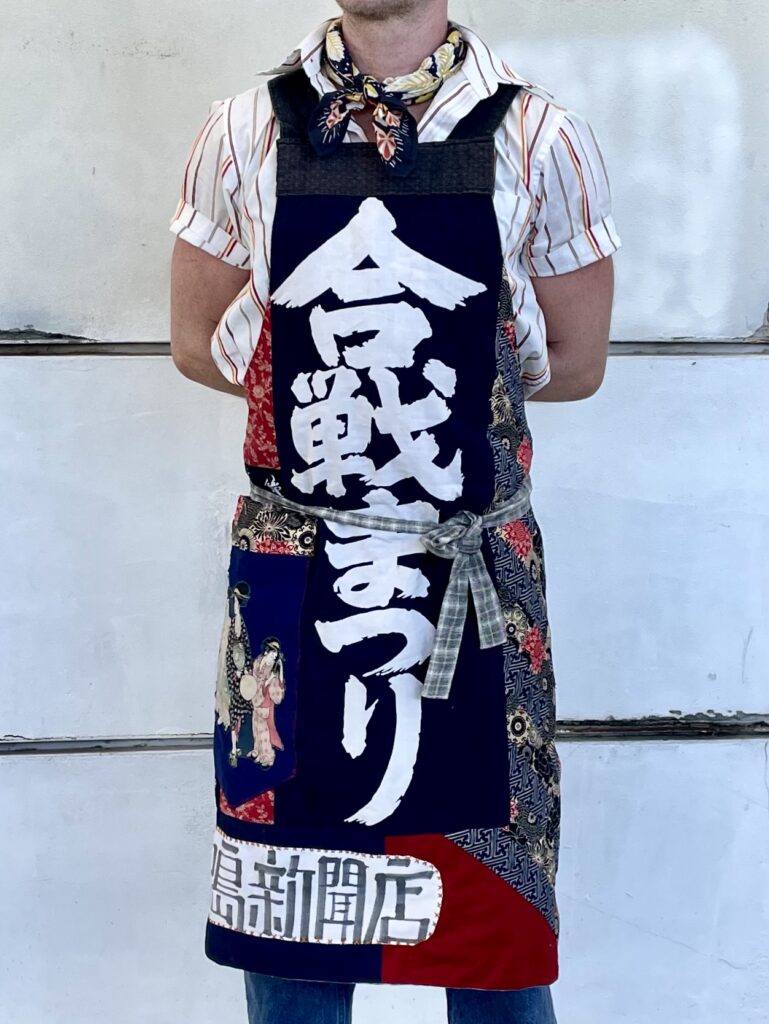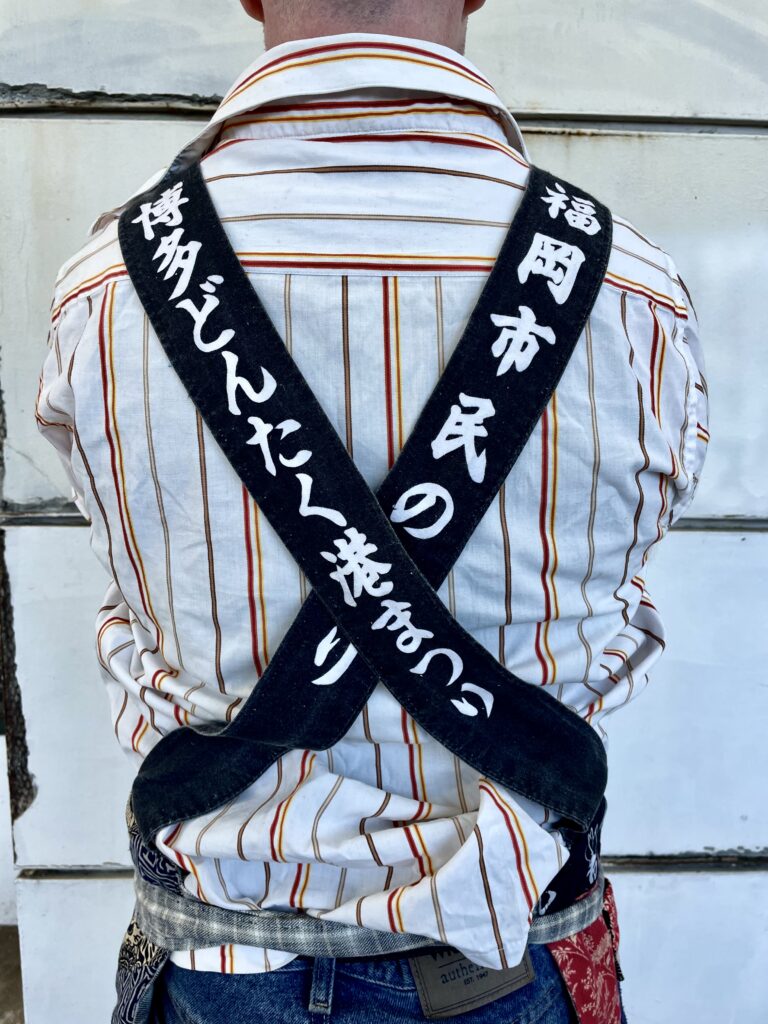
I’m an American tailor, with a Russian name, and a somewhat Japanese aesthetic. I’m an absolute mess. Maybe that’s why I make so many aprons. I need something absorbent to sop up the chaos of my life.
After a trip to Japan this past February, I returned home with a bag stuffed with fabric scraps purchased from flea markets and tailor shops. I had no idea just what I would make, but I wanted it to be something that would show off the textiles. It would have to be something fairly large and that would use a lot of cloth, because it was the combination that I particularly liked, not using the bits piecemeal and in patches.
Kimono would be obvious, and indeed part of the tradition of kimono is to display the cloth – the color, texture, movement of the fabric on the body. But kimono comes from a rich textile tradition that as both an amateur and an outsider I did not want to dabble in. Much as I applaud self-discovery and experimentation, there can be a point where experiment veers hard into disrespect, for both the inspiration and the material. And I had no interest in turning someone else’s culture into costume. Besides, I can’t imagine any circumstance in which I would wear kimono. Certainly not in my present life.
But I wear aprons all the time, while at work at my tailoring job or – and even more critically – at my other job where I work food service and where there is a near constant threat of spilled beverages and tumbled sauce. And while I never wore kimono during my trip, not even once, I did try on several aprons to see how they fit and what was different about the design.
I had made aprons before, but largely in a more western tradition with a loop that goes around the neck. In Japan I noticed whenever at a ramen shop or a restaurant supply store that most aprons either crossed in the back, or had a brace so that the straps appeared like the capital letter H.
However, most of the aprons I tried on provided inadequate coverage compared to the style of apron I typically wear, even if they were more comfortable. The natural solution was to combine the two approaches – the coverage of a western apron, the fit of a Japanese one. Now, with how much scrap I bought, I could still have made a kimono, but with all those drinks and dressings sloshing about while I work my other job, an apron was just so much more sensible. Kimono are courtly, aprons are workwear. I’ve never seen a geisha depicted ladling gravy.
Once I got home, I spent about a week arranging the scraps and consider a design. When I had it stitched together, I modeled the assemblage for a Japanese friend. She grew up in Nagoya, and now runs a business selling plum preserves. I pointed out the individual scraps, told her where I had gotten each – in Tokyo, in Kyoto, in Osaka – pointed out the design, the geisha appliqué, and gave a twirl for her admiration.
“No Japanese person would ever wear that,” she tsked.
She indicated the color scheme (too bold! far too many colors!) the geisha appliqué (simple patterns only!) the ridiculousness of using a banner for a newspaper stand as the central panel (like wearing a Coca-Cola advertisement!) and the length (too long!).
I took in her critique and answered, “well, funny you should mention no Japanese would wear this because I made it for myself and – as it turns out – I am not Japanese.”
“Hmm,” she said.
“Yes! Not even a little! Didn’t even have to take a DNA test,” I quipped.
“Well…then I suppose it’s a good apron.”
It’s comfortable, it has great coverage, it’s quilted so it’s good outdoor workwear in our chill and foggy Bay Area weather and – as I’ve now learned after several inauspicious spills – both highly absorbent and washable. Good gravy, try getting all that from a kimono.
